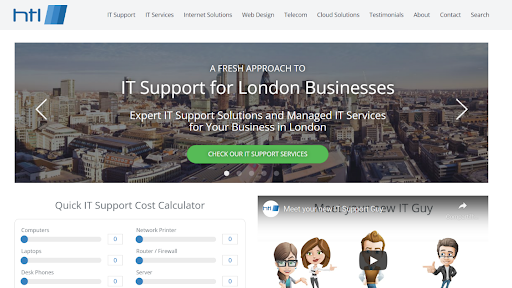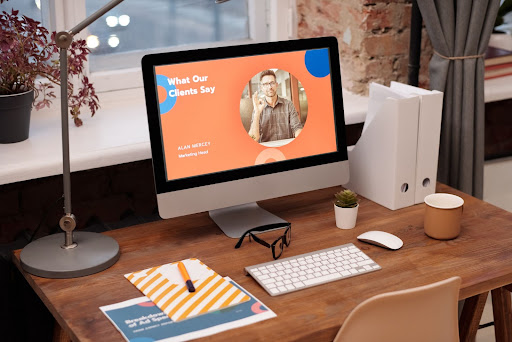5 Landing Page Best Practices to Boost Your Conversion Rates

Effective landing page design is a subtle art that is often under-appreciated. An effective landing page needs to leave an impression and convey a clear message, and it needs to do so fast before a visitor clicks away.
How fast does your landing page need to leave an impression? It's hard to know for sure, but the 8-second rule is often cited in the digital marketing world. If you're looking for a rule of thumb, that's not a bad metric to start with.
Making sure your landing page can hook people in 8 seconds or less is no easy feat, but the potential rewards make it worth the effort. Here are some of the principles you can apply to help your landing page leave a strong impression as quickly as possible.
1 - Choose the right visual language
A common mistake in amateurish landing pages is misusing visual elements. Poorly-designed landing pages are often too bland, too noisy, or don’t agree with the content of the page.
The last point is important. Trying to leave an impression in 8 seconds means that everything on the page should help convey the core message. For example, if you are selling women’s clothes, having a website that looks like that of a tech company will cause unnecessary confusion. And it wastes precious seconds.
Visitors should be able to tell what your landing page is about the moment it loads, with minimal reading and no need to scroll down. At first glance they should be getting at least an idea of what category it is in.
This can be achieved in a variety of ways, and some of them are subtler than others. For example, if you’re selling phones, having pictures of the phone or people using the phone front and center on the landing page can help. Or you can make a cellphone part of the website’s logo. Or you can do what HTL.London did, and make a short business description the first people see when opening the landing page.

More subtle examples of how to match landing page design to content involve using colors, icons, layout, and overall aesthetic to create the right sort of vibe for the website. The easiest way to get these right is to check what your competitors are doing. Using a website template that was designed with your niche in mind also helps.
2 - Manage your calls-to-action (CTAs)
If your business only offers one product at one price, managing the number of calls to action on a page is relatively simple. Just include one or two big “buy” buttons to work as the focal points of the page as the visitor is scrolling through.
For businesses that offer a variety of goods and services, however, this process is tricky. Figuring out how many CTAs to include and where they should be placed is a juggling act. Having too many CTAs can make the page look unprofessional. And if each CTA is for a different product, you risk inducing analysis paralysis. On the other hand, offering too few CTAs can make it harder for customers to find what they need.
There are different solutions to this. One of them is to optimize the page based on consumer demand, consumer feedback, A/B testing, and more. Checking how competitors are tackling that problem is also a good idea, of course.
Another solution is to have multiple landing pages, so you can decide where to send visitors based on what marketing channel they are coming from. It can be very useful if your products are targeted at different segments of the market, and there are marketing tools out there that make this process seamless.
3 - Simplify the consumer journey

What happens after a potential customer clicks on a CTA is just as important as the design around the CTA. Until money has exchanged hands, the sale is not done, and some customers will give up their purchase quite easily. A slow, inconvenient, or hard-to-follow purchasing process can drive away a lot of leads.
Simplicity is the key principle to have in mind here. Every step of the customer journey is a place where leads can be lost, so you should always be on the lookout for ways to reduce the number of steps needed. Whether it be by reducing how much information is needed to create an account, offering more convenient payment options, removing unnecessary prompts for feedback or surveys, and more.
Businesses have come up with all sorts of clever solutions to help keep the road from click to purchase as short as possible. One of them is allowing users to create accounts with bare minimum details, then asking for more information later.
4 - Optimize the technical aspects
Don’t underestimate how sensitive avid shoppers are to slow websites. While consumers may be willing to be more patient when dealing with niche products or pages, a survey among eCommerce buyers found that 50% of them will abandon a website if it takes more than 6 seconds to load.
You only get one chance at a first impression, and a slow or unresponsive website can easily turn that first impression into something negative. This is speaking nothing of how websites affect organic traffic and SEO.
If you haven’t been keeping track of how long your site takes to load on different devices, it’s time to start doing so. There are plenty of loading speed measuring tools out there that can help you figure out if your website is currently sluggish on any devices.
5 - Get creative with social proof

When thinking of landing page social proof, people often jump to thinking of reviews and testimonials. And while those are effective ways to showcase how a given product has affected other people, that is not the only option out there.
Consumer-made videos can also be used to showcase social proof. As can social media photos. These methods aren’t the best for every industry, and getting consumers engaged enough to generate that type of content can be tricky. However, leveraging different types of social proof is an excellent way to stand out.
Written reviews can also stand out if they are presented in interesting ways, whether they are organized in a way that makes them easier to browse, or presented alongside relevant images.
Any change from the norm can help catch a visitor’s eye and draw their attention. And that’s exactly the kind of hook you need if you want to pass the 8-second test.
Copyright © . All Rights Reserved